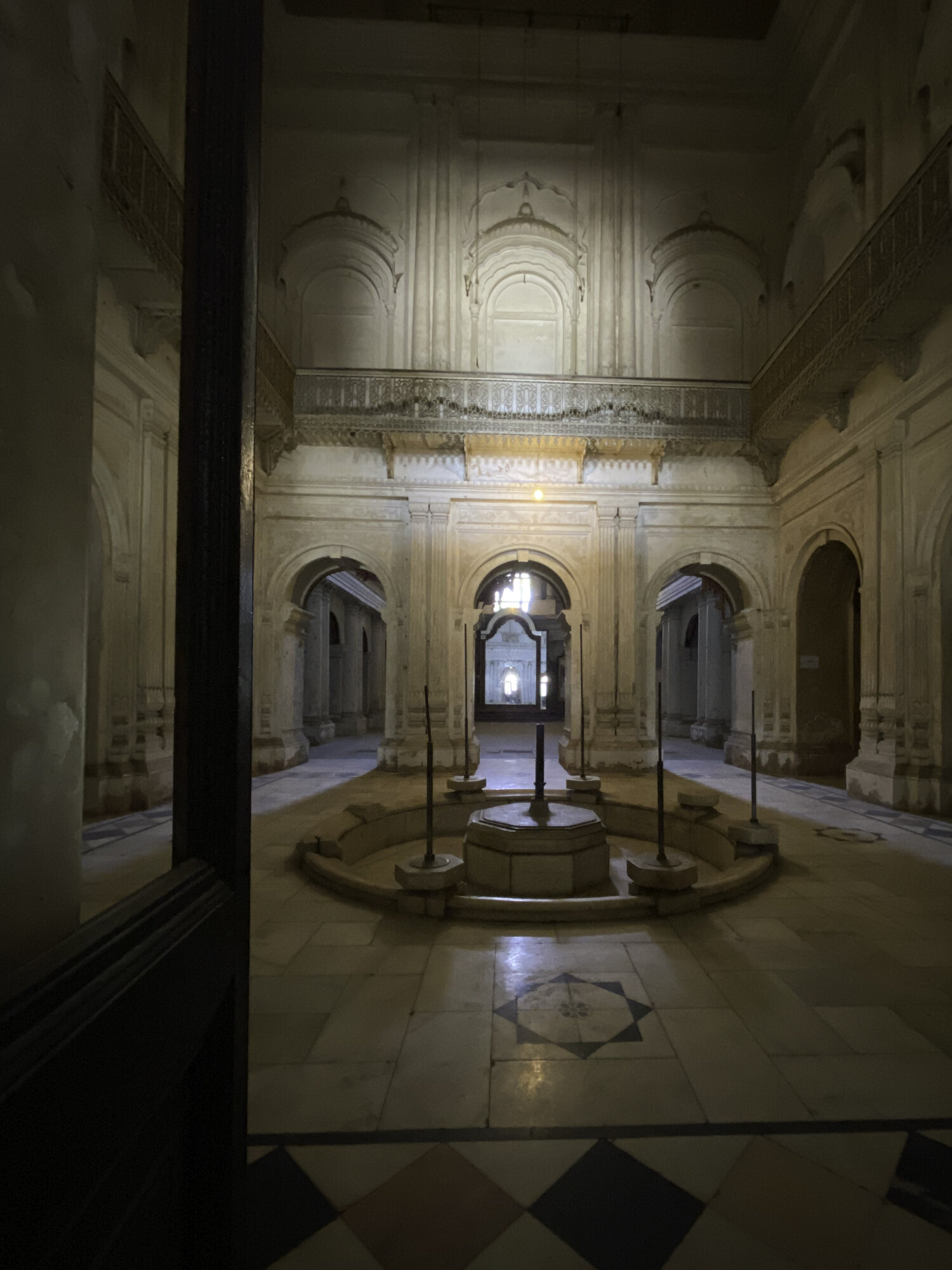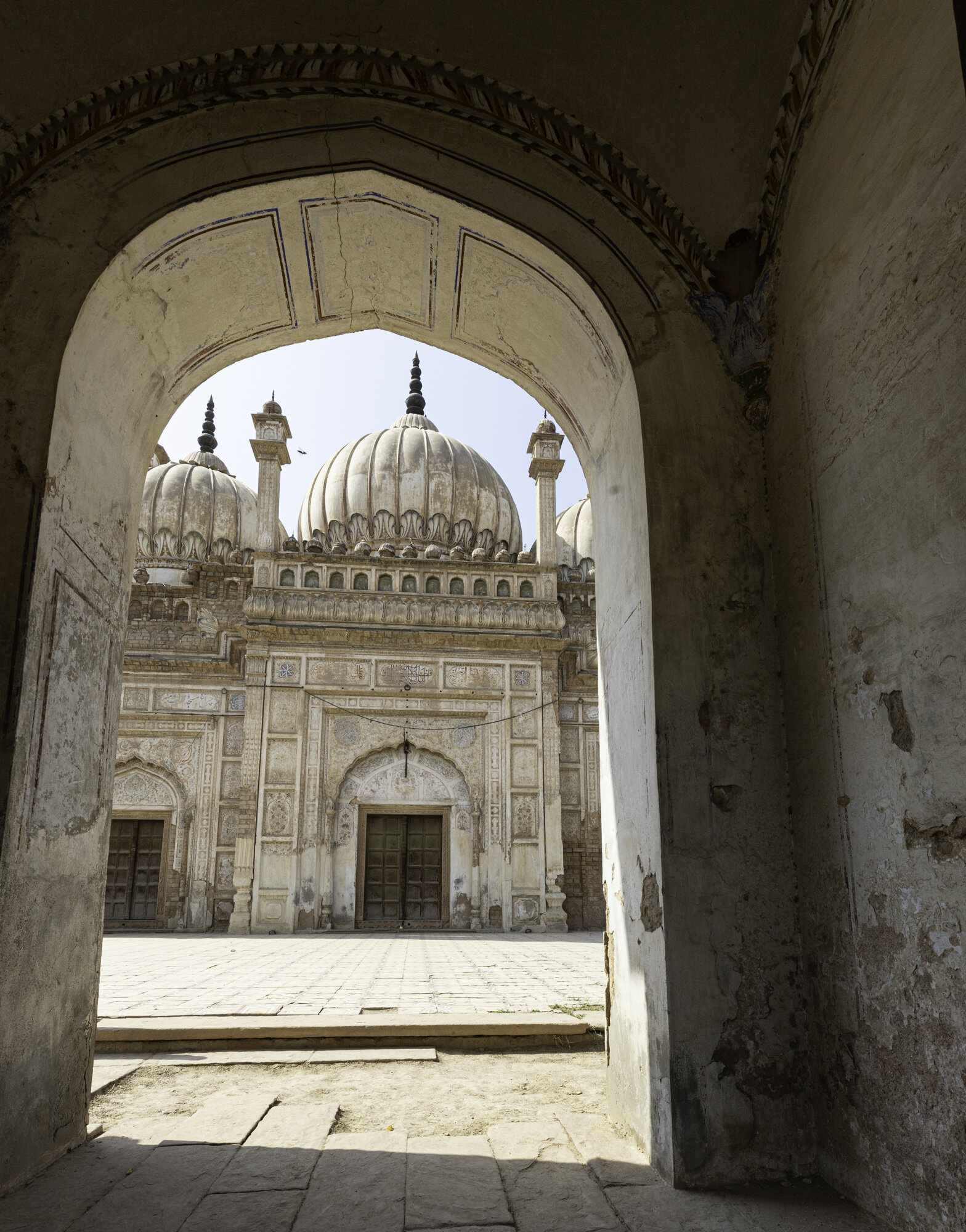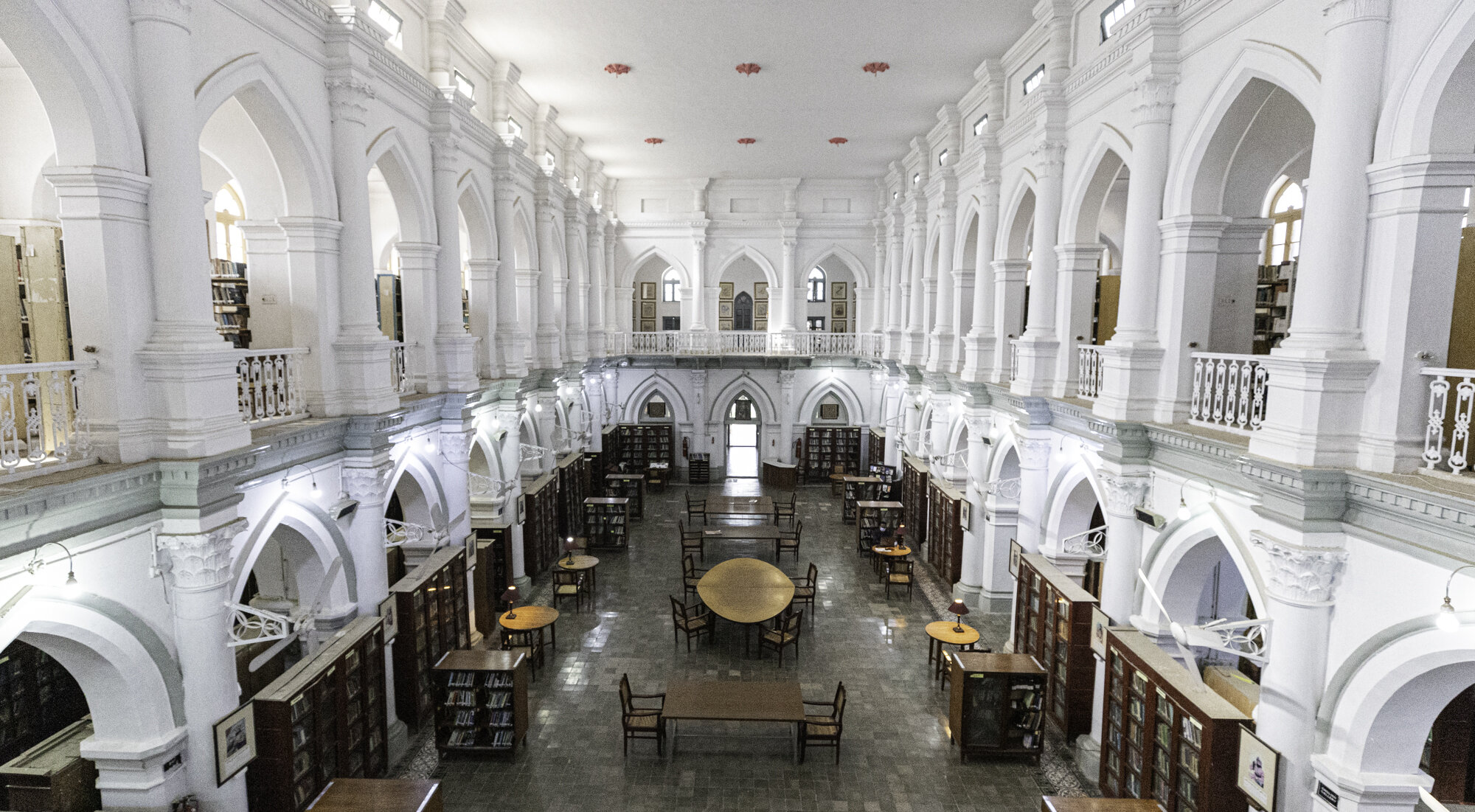Postcards from Pakistan
Postcard from Derawar Fort, Cholistan Desert - a fortress of truly towering proportions
We leave Bahawalpur behind and travel another 100 kilometres into the Cholistan Desert. Derawar Fort rises up out of the desert and the colour of the surrounding sand is matched by the millions of small, narrow bricks that make up the fort.
40 bastions standing 30 metres tall, 1500 metres of wall make up the square shape of the fort. Each bastion is decorated with intricate brick work patterns. As you get closer you can’t believe the scale of the building, seemingly built in the middle of nowhere.
When the Fort was built in the 9th century it stood next to the Hakra River and was a defensive point to protect valuable water resources on caravan and pilgrim routes across the desert. It was built for Rai Jajja Bhati, a Hindu king from Jaisalmer, India. The fort changed hands many times and in the 18th century it became the property of the Nawabs of Bahawalpur, who rebuilt it in 1732.
Inside the Fort are many buildings, most in a poor state of repair. The Bahawalpur Department of Archaeology is working to restore parts of the fort but more work and funds are required. We visited one bastion where the structure has been repaired and new frescoes painted but it is a shame that the original frescoes are not protected.
The fort is currently on the tentative list of sites to be included on the UNESCO World Heritage List. UNESCO defines cultural and natural heritages as “irreplaceable sources of life and inspiration…our touchstones, our points of reference, our identity”. Derawar Fort certainly meets that definition.
Gateway into the fort
Curved, steep driveway from main gate - excellent defences
Panorama inside the fort
Bastion currently under restoration
Walkway up to see the bastion restoration work - no railing, long drop down - don’t think I’d like to work on the scaffolding
Restoration inside almost complete
Ceiling detail
Frescoes - before and after
Wall detail
View from the bastion - where the irrigation stops the desert immediately starts
Inside the fort - years of restoration work required
Inside the fort
Inside the fort
Under the dust a hidden treasure
Parts of the buildings look beyond repair
Painted ceiling
Bastion brickwork
Time to leave to go to our next stop - decided against the camel to get there
Cars are a much better option against the heat and dust
Postcard from Sadiq Garh Palace, Bahawalpur - neglected but not forgotten
After visiting the centre of Bahawalpur, we took a small detour to visit Sadiq Garh Palace. We were just going to stop and have a look on the outside before continuing on to see Derawar Fort. But one wrong turn into a private driveway led us to meeting the Nawab and his family and an invitation to visit inside the Palace and to stay for tea. I am constantly amazed at how generous and hospitable Pakistanis are to people they don’t know.
The Palace was built for Nawab Sadiq Muhammad Khan (IV) in 1882 and took ten years to build. Italian architects designed the building that has both European and South Asian influences. The Palace has three floors and sits in a large, symmetrical garden with a mosque to one side.
The Palace has been left empty now for years. Glass is broken in the ornate windows, tiles are missing, wooden floors are rotting away. There is little left of the interior furnishings, three ornate mirrors remain in a downstairs room, too heavy to move or steal.
Apparently there are a large number of heirs to the property and there is no agreement over what to do with the Palace. Suggestions include keeping it in the family, handing it over to the local Government to turn into a museum or selling it to become an hotel.
It is a beautiful building and we can only hope a decision is made soon before the building is beyond restoration and we lose a valuable part of Bahawalpur’s history.
The family Mosque
Postcard from Bahawalpur Central Library
We visited the Bahawalpur Central Library and my knowledge on architectural styles was broadened again. The Library was built during the British Raj and you can easily see the Victorian influence. It is built in a Neo-Gothic-Victorian style, also known as Gothic Revival. The library includes all the major decorative items such as moulded frames for windows, arches and lancet windows (tall with a pointed arch at the top).
Construction started in 1927 but took seven years to finish due to lack of funds. I was given a wonderful tour of the library including the rare book section and the library’s amazing collection of early editions of both Dawn and the Pakistan Times, two Pakistani newspapers established by Mohammad Ali Jinnah, the founder of Pakistan. I could have spent a lot of time sitting and reading through the newspapers. I opened the Pakistan Times on Saturday April 26, 1947. One headline was “Viceroy determined to play fair on Frontier issue”. The Viceroy was Lord Mountbatten.
The central reading room is beautifully proportioned with light streaming in. The top gallery has an Islamic art collection. Next to the main library is the Children and Ladies Section that includes a room of braille books. In the children’s section there was a large book on major cities around the world. The book was opened to Sydney in honour of our visit. Nice to think that the next day someone might sit and read about Sydney, Australia, while living in Bahawalpur, Pakistan.
Central reading room
Illuminated Quran
Radha is a Hindu goddess and consort of the god Krishna
I love old catalogue card cabinets
Pakistan Times, Saturday April 26, 1947
Gallery
Braille book
Children’s library
Seeing the Opera House made me feel a little homesick
Main entrance to the library
Postcard from Noor Mahal, Palace of Light, Bahawalpur
If you visit Multan, then a day trip to Bahawalpur is a must.
Bahawalpur was formerly a princely state, ruled by the Abbasi family until 1955. Bahawalpur was founded in 1727 by Nawab Sadiq Muhammad Khan Abbasi. Nawab is a royal title, comparable to a prince. On 22 February 1833, Abbasi formed an alliance with the British and so Bahawalpur become a princely state of British India. When India became independent in 1947 Bahawalpur joined Pakistan and in 1955 it became a province of Pakistan.
We started our day with a visit to Noor Mahal, also known as the Palace of Light. The palace was built in 1872 and incorporates many different styles from Greek to Italian to Islamic. The building was designed by a British engineer, Mr Heenan, for Nawab Abbasi IV for his wife. It is believed that his wife only stayed there for one night as she didn’t like that she could see a graveyard close by.
In 1956, after Bahawalpur become a province, the palace was administered by a department of the local Punjab Government. The building had fallen into disrepair and many items had been stolen. In 1971 the palace was leased to the army. In 1997 the army purchased it and restored the building. It is now a protected monument and open to the public.
While the building has been beautifully restored and contains many antiques, including a 1935 Ford Caravan that the Nawab used for Hajj, my favourite part of the tour was the gallery of historic photographs. It makes me wonder if someone will look at my photographs one hundred years from now and wonder about the people and what their lives were really like.
Front entrance hall
Ceiling and chandelier
Intricate tile work
One exhibit in the small museum
1935 Ford car and caravan
Inside the caravan





























































